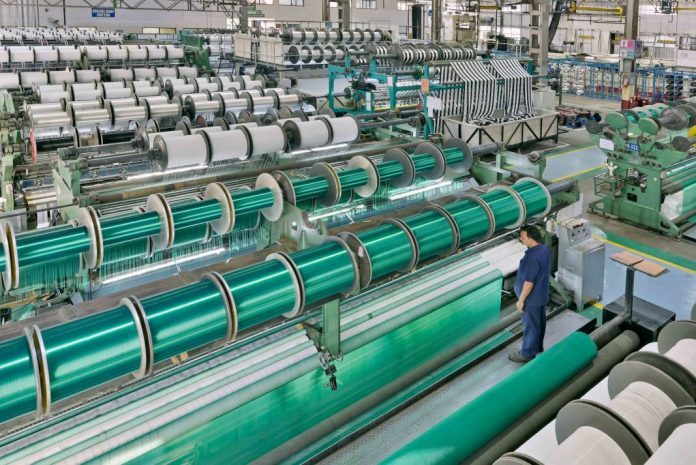The starting point is granules, the size of gravel, which are then converted into thin threads, in turn, are twisted into ropes and woven into nets.
It is then fed into the machine that is at the end of the production hall. The raw material for ropes and nets are polypropylene granules, High-Density Polyethylene (HDPE) and other polyphenes. The granules have a variety of colours and properties, depending on the customer’s specifications.

Through the extruder process, with high pressure and heat, the thread is made, almost like spaghetti. It is immediately cooled in a water bath and spun on coils for the production of ropes and nets. The extrusion process is similar to the production of fish feed.
Production takes place inside a 180-acre industrial estate in the village of Wai, Maharashtra, western India. Here, Garware Technical Fibers has several factory premises assembled in one cluster site.
Spinner
Wai is located 718m above sea level, in the fertile highlands east of Mumbai. Even in early March, the sun is fiery. Rain is scarce. But intricate water pipes from nearby rivers and ponds provide excellent conditions for cultivating the land. A wide variety of vegetables and fruits are produced in the region. Sugarcane, rice, tomatoes, strawberries. The vast majority of Wais’s 45,000 residents are engaged in agriculture.

Inside the factory premises, the coils with nylon rope spin constantly. The threads are tied and braided. Some of the rope is mooring. Something are made for farms. After the nets are spun out and braided together, they are steam pressed, to make them stronger and flat so as not to damage the fish, as well as to facilitate the washing of nets.
Large weaves also make tablecloths, so-called coated fabrics. This can be for algae protection, lenses or lice skirts.
Strong growth
“About 40 per cent of our business is fish farming. 60/40 international versus domestic sales. Of the international business, 50 per cent is fish farming,” said Pravin Gogia, Vice President of International Business, to SalmonBusiness.
“We are experiencing strong growth,” he added.
It also shown in a product portfolio of 25,000 individual products. It consists of, among other things, trawl nets, farm cages, insect nets for agriculture, hockey nets, football goals and badminton nets, to mention a few.

Innovation
“We focus on innovation. 25 per cent of our products are younger than three years,” Gogia said.
Outside the factory, premises are stacked pre-packaged nets, marked with labels indicating the final destination. Most are going to Norway. For salmon farmers served by Garware partner Selstad.
India has been manufacturing textiles for over 3,000 years. Cotton, wool, silk. Later also polyester and nylon. Well-known terms such as khaki, pyjamas and cashmere, for example, all come from India.
The textile industry was central when India, before being incorporated into the British Commonwealth, accounted for a quarter of the world’s total gross domestic product. It was the fertile soils that built up a population and industry that along with China, was the world’s largest.


